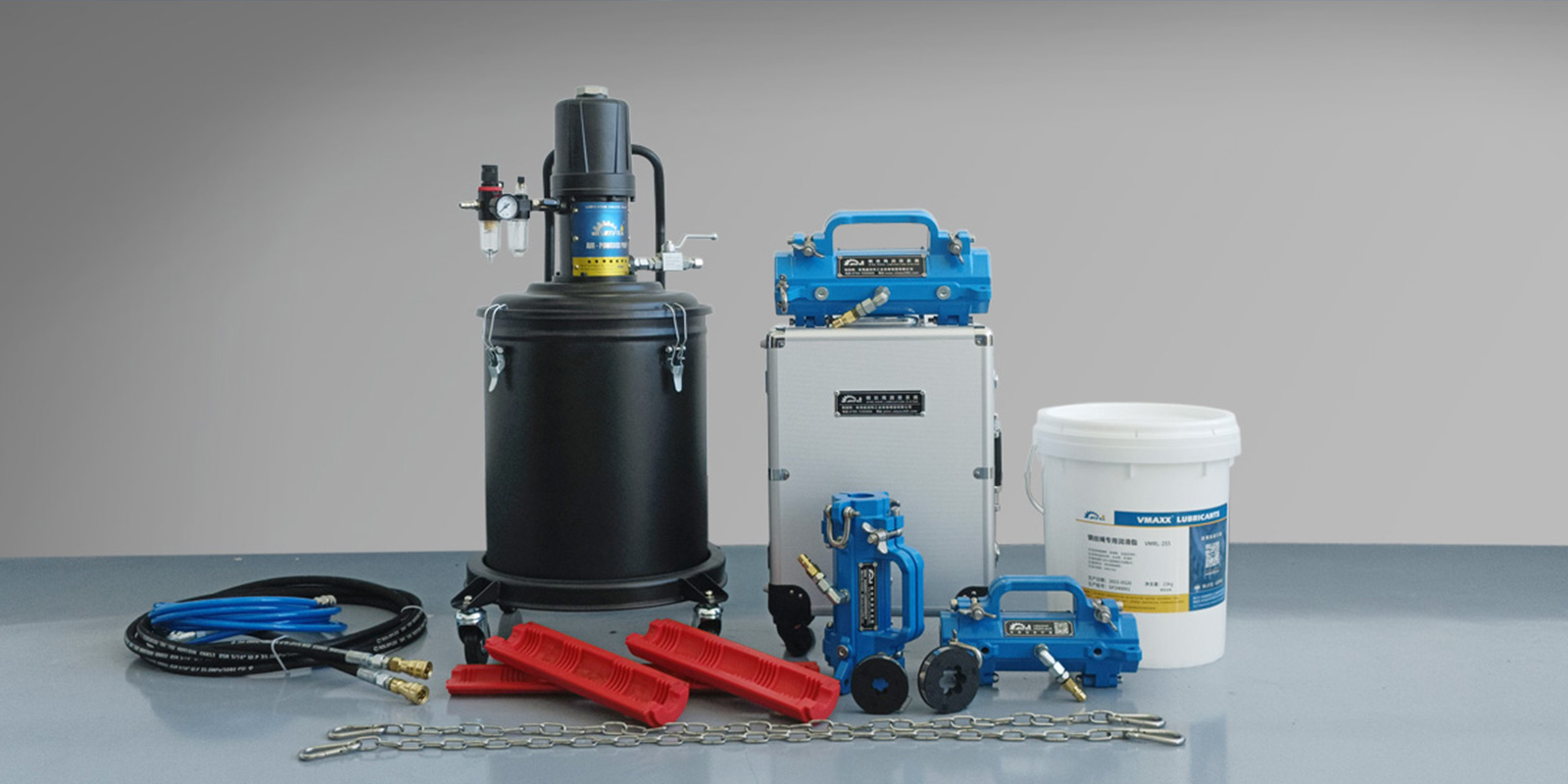During daily use of wire ropes, it is necessary to conduct regular inspections as per relevant regulations and keep records. Inspection items include: wire rope wear, broken wires, corrosion, lubrication, deformation, etc., connection parts or end fastening parts, and other abnormal phenomena. When the wire rope slides over components such as pulleys, drums, and line wheels, the components are prone to wear grooves due to friction with the wire rope, accelerating the wear of the wire rope. In some cases, pulley wear can also cause wire rope deformation and bending fatigue.
Wire rope lubricants need to have the following properties:
Lubrication Performance
The primary role of wire rope lubricating grease is lubrication. To maintain lubricity for as long as possible during wire rope use, the lubricating grease must first have certain high and low temperature properties. The dropping point measures high-temperature performance, and the low-temperature brittleness point measures low-temperature performance, ensuring no dripping at high temperatures and no brittleness at low temperatures. Secondly, the lubricating grease should have good adhesion in the working environment, especially maintaining adhesion at specific temperatures and high-speed pulling to prevent being thrown off. Currently, neither domestic nor foreign lubricating grease standards have requirements or corresponding testing methods for this. People often hope to improve adhesion by increasing the dropping point, but in practice, increasing the dropping point does not bring obvious benefits and often reduces other properties of the lubricating grease. At present, we can refer to the petrochemical industry standard SH/T0637-1996 to establish a relatively complete standard system for evaluating the adhesion of lubricating grease on wire ropes through a testing method for the甩掉 performance of lubricating grease under centrifugal force.
Rust Prevention Performance
The second property of wire rope lubricating grease is rust prevention. The current national standard GB/T 2361-1980 "Warm and Humid Test Method for Antirust Oils and Fats" and the petrochemical industry standard SH/T 0081-1991 "Salt Spray Test Method for Antirust Oils and Fats" are recognized as more suitable testing methods in the industry, which can meet the performance requirements of wire ropes for lubricating grease. In practical applications, due to poor adhesion of the lubricating grease, it often流失 or falls off shortly after use, causing the wire rope to lose the protection of the lubricant and fail to prevent rust. Port machinery users and petroleum enterprise users require wire rope lubricating grease to have good adhesion to prevent the lubricating grease from falling off and polluting the environment, causing safety hazards.
Friction Enhancement Performance
The friction enhancement performance of wire rope lubricating grease. Mine friction wheel hoists rely on the friction between the wheel, lining, and rope to transmit power and achieve hoisting, which is a mandatory requirement of coal mine safety regulations.
Environmental Performance
The environmental performance of wire rope lubricating grease. Wire ropes used in elevators, cable cars, etc., have environmental requirements from users, and port machinery and petroleum wire ropes are expected to be non-polluting to the working environment. Elevator and cable car wire ropes require the chemical composition of lubricating grease to be free of mineral resins to prevent environmental pollution and facilitate cleaning. During use, wire ropes cannot be heated and oiled like wire rope manufacturers, and can only be surface-oiled or immersed, so the grease must have room-temperature constructability and good permeability.
Understanding the properties of wire rope lubricating grease naturally clarifies its uses.
Methods for Selecting Wire Rope Lubricating Grease
Among many factors, the purpose of the wire rope is the most critical and important for selecting lubricating grease. For wire ropes used in mine friction hoisting, focus on friction performance and related indicators. The current national mechanical industry standard JB/T10347-2002 specifies testing methods for this, requiring a friction coefficient of generally 0.30 at 20°C and 0.25 at 30°C. Such greases are also called friction-enhancing greases or Goop oils; wire ropes for elevators and cable cars are prohibited from using mineral resins and require lubricating grease to have good lubrication and friction enhancement performance, with a friction coefficient above 0.26 at 20°C; wire ropes for port machinery, mine inclined shafts, and construction machinery require lubricating grease to have good lubrication and rust prevention performance; wire ropes with relatively static loads in ports, fisheries, etc., mainly select lubricating greases with good rust prevention performance, and their rust prevention salt spray test index should reach 336 h; the hemp core grease for wire ropes, originally made from reduced second-line wax oil, should be improved due to its low dropping point, which harms high-grade surface grease; lubricating greases for wire rope maintenance should enhance oil application convenience and permeability in addition to meeting general requirements for wire rope lubricating greases.
VMAXX® has developed professional lubricants for wire ropes to adapt to various working conditions during wire rope use. They have good waterproof effects, high film formation, and chemical stability, achieving rust prevention while effectively lubricating. Combined with the wire rope cleaning and lubrication system, they make daily maintenance of wire ropes simpler and more efficient.


